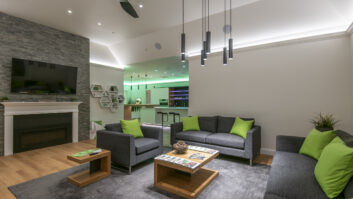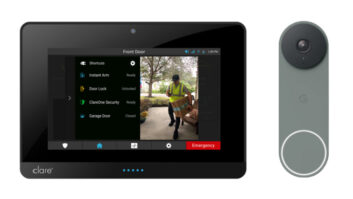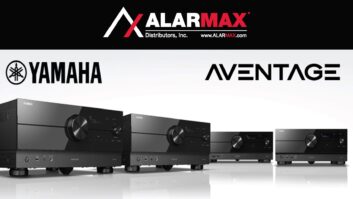Irvine, Calif. – Smarthome tossed its bits into the standards ring with a proposal for a home-automation standard that combines powerline and 900MHz wireless-network technology to improve reliability, extend range and reduce costs.
The company’s Insteon standard is targeted to the do-it-yourself and custom-install markets and will be available in Smarthome-brand products in the first quarter of 2005, said Smarthome’s CEO Joe Dada. Insteon chips will be available on an OEM basis to other suppliers at about the same time.
Insteon products will include in-wall light switches and dimmers; electrical outlets; wall-wart modules that plug into existing electrical outlets; screw-in light-bulb adapters; and in- and on-wall programmable keypads that control such systems as HVAC, security, lighting and drapery. Insteon-equipped adapters and electrical outlets could also be used to control pool pumps, outdoor lighting systems and sprinkler systems.
Insteon chips could also be built directly into appliances, consumer electronics equipment, garage-door openers and the like.
The low-bit rate, 1.2Kbps two-way standard delivers a high level of signal sensitivity, and therefore reliability, even if a lot of signal-attenuating TVs and cellphone chargers are plugged into electrical outlets, Dada said. He cited the technology’s mesh-network topology, which turns every device into a signal repeater, and powerline-to-RF bridges, or access points, which will simultaneously repeat a command over powerlines and wireless to boost signal strength and distance.
Individual Insteon-equipped products will either incorporate powerline or wireless technology except for access points, which will incorporate both. Unlike the wireless ZigBee and Zensys’s Z-Wave wireless protocols, Insteon is compatible with the installed base of X-10 powerline devices.
Insteon’s reliability and low cost, Dada claimed, promises to broaden the home automation market.
The technology is less expensive to implement than ZigBee or Z-Wave, he contended, because products need not incorporate higher cost wireless technology. Insteon RF devices, however, will also be “a little less expensive” than other wireless-standard devices.
Lamp modules that plug into electrical outlets, for example, will retail for $19.99 if Insteon-equipped compared to $39.99 for the wireless technologies, Dada said.













